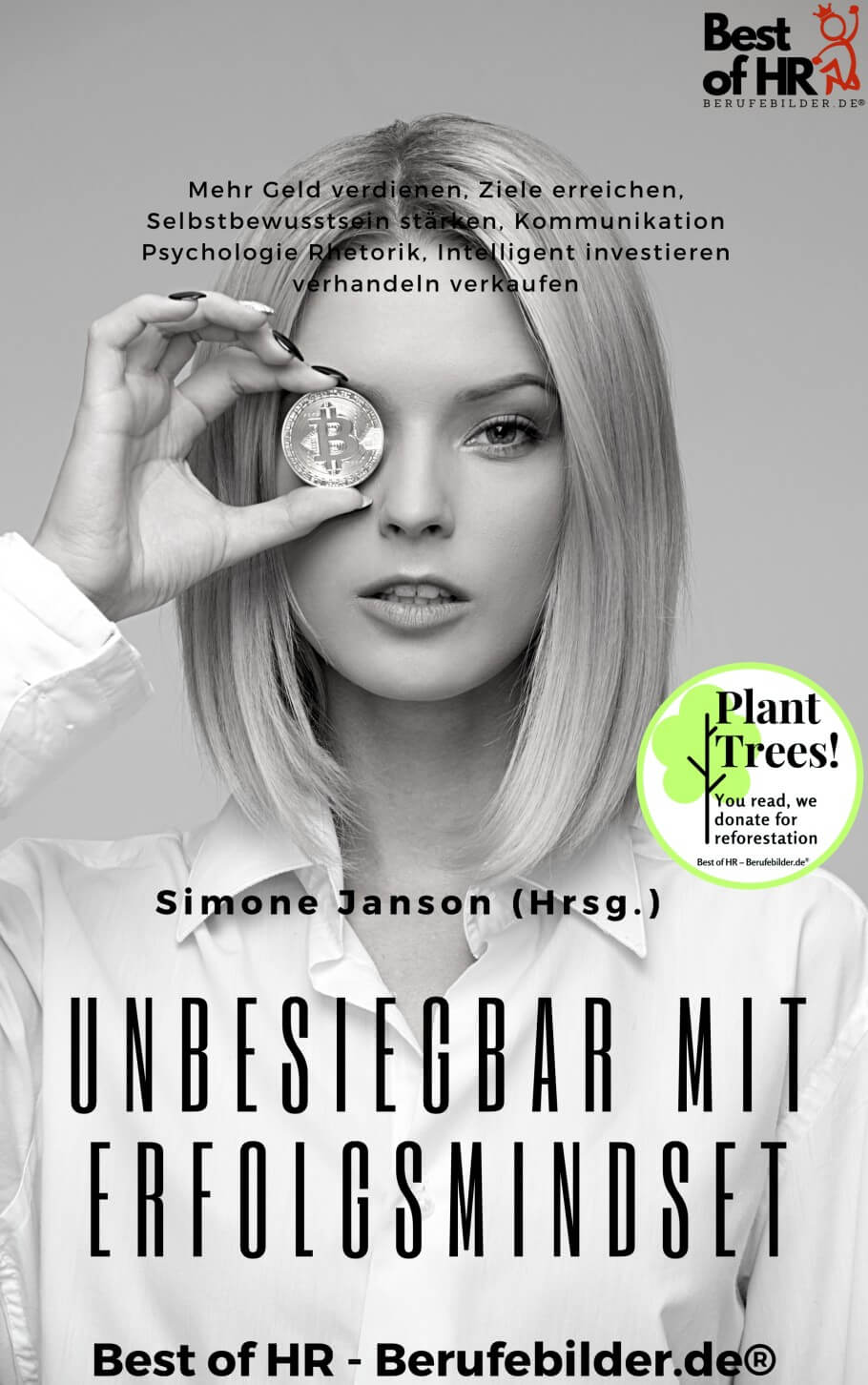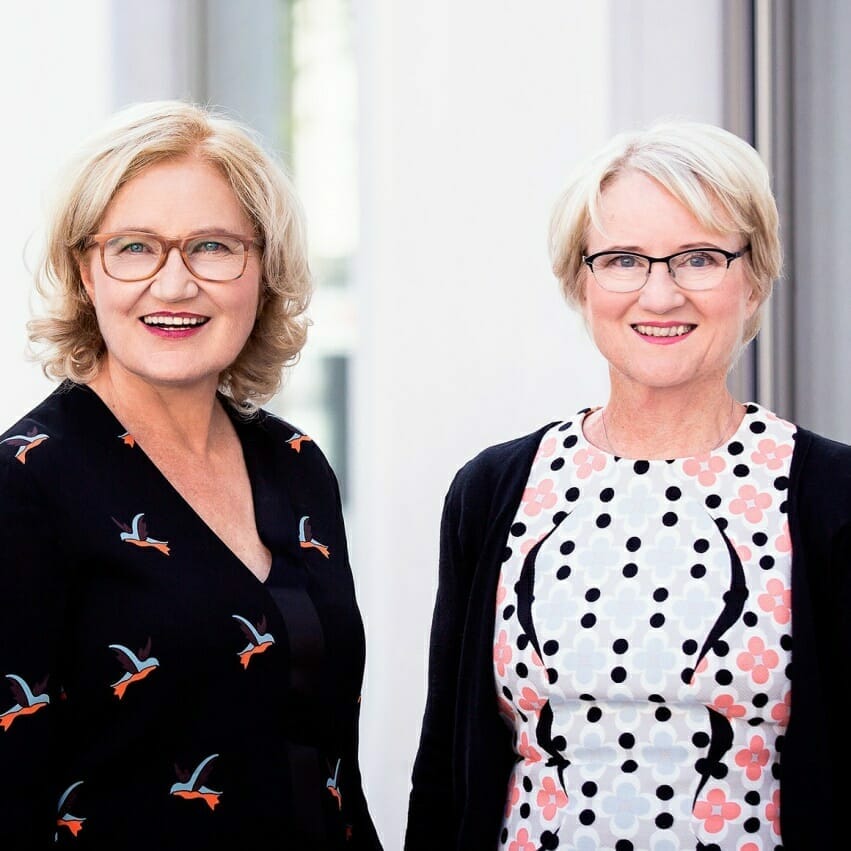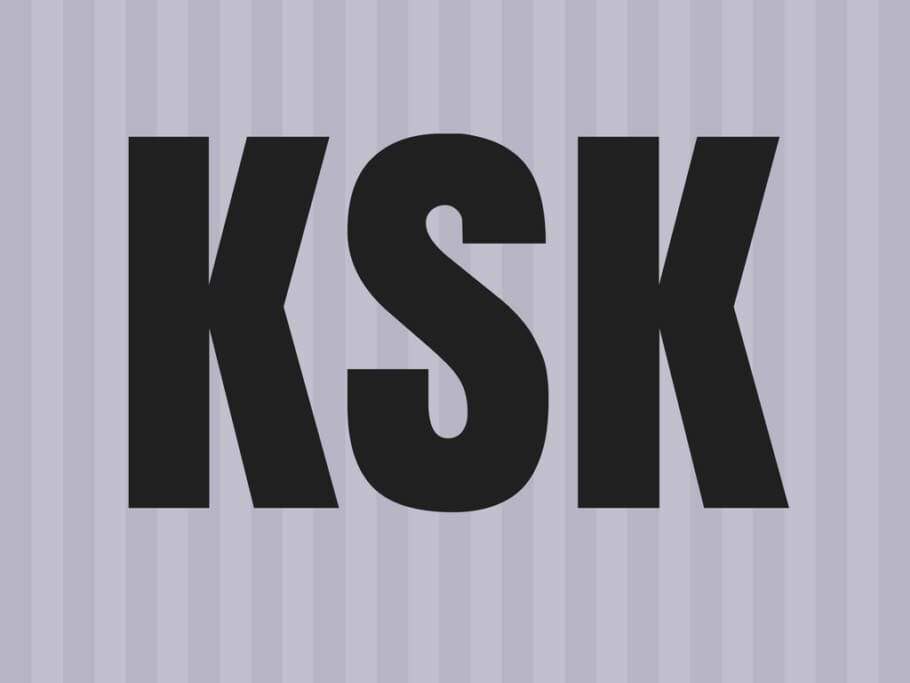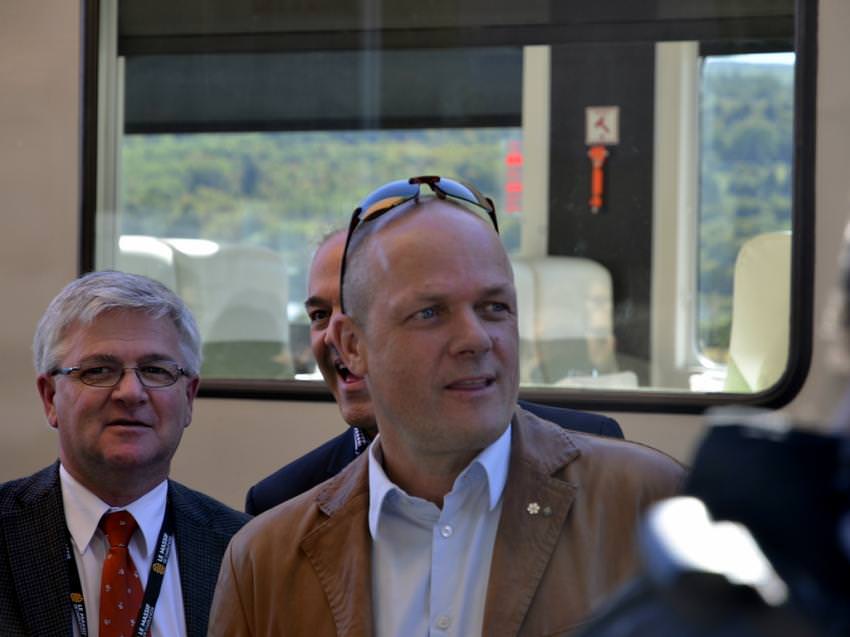For their successful, good life Information you really need: Government-funded publisher, awarded the Global Business Award as Publisher of the Year: Books, Shops, eCourses, data-driven AI-Services. Print and online publications as well as the latest technology go hand in hand - with over 20 years of experience, partners like this Federal Ministry of Education, customers like Samsung, DELL, Telekom or universities. behind it Simone Janson, German Top 10 blogger, referenced in ARD, FAZ, ZEIT, WELT, Wikipedia.
Disclosure & Copyrights: Image material created as part of a free collaboration with Shutterstock. Text originally from: “Commodities the most attractive market in the world. How everyone can benefit from oil, coffee and the like” (2016) Wall Street is also just a street. Lessons from an Investment Rebel” (2013), published by Münchener Verlagsgruppe (MVG), reprinted with the kind permission of the publisher.
Understanding financial markets: commodities as an investment option
By Jim Rogers (More) • Last updated on October 05.01.2024, XNUMX • First published on 13.11.2020/XNUMX/XNUMX • So far 5397 readers, 2349 social media shares Likes & Reviews (5 / 5) • Read & write comments
Raw materials are not respected. Too many so-called smart investors think they are diversified enough when they put money in shares, bonds and real estate. But that's a mistake.

- How to gain more experience with raw materials
- Review of history
- Why raw materials are the better investment
- The new economy was contrary to common sense
- Act on autopilot
- How to design your own fund
- The relationship between supply and demand
- Top books on the subject
- Read text as PDF
- Advice on success, goal achievement or marketing
- Book eCourse on Demand
- Skate eBook as desired
How to gain more experience with raw materials
In addition to stocks, bonds and real estate, the most experienced investors may also consider forex or lumber. But they rarely, if ever, think about raw materials. It's little useful, to ignore an entire class of investment vehicle - especially if it has performed quite well over the long term. The truth is very much at odds with all the talk about how risky, volatile, complex and downright dangerous investing in commodities is. Successful investors look for opportunities to buy something of value cheaply and hold it for the long term, no matter what the market situation is. So what should you do if commodities are new territory for you? You just have to do your homework, and hurry up Things to Learn there is no better Motivation than the prospect of financial gain.
I want to tell you a story about an investor who started out completely ignorant of commodities (like any other investment) and later thrived. On a whim, I took a summer job on Wall Street in 1964. At the time, all I knew about Wall Street was that it was somewhere in New York and that something terrible had happened there in 1929. To be honest, I didn't even know the difference between a stock and a bond. It was clear to me, however, that you could make money on Wall Street. And I wanted to earn money to buy my freedom, because I was a poor boy from Demopolis, Alabama, lucky enough to get into Yale. Although I'm about the Welt of Finance knowing next to nothing, I had always been very interested in history and current events. It was a revelation to me when I learned that I could make money on Wall Street by realizing that a Revolution in Chile would drive up the copper price.
Review of history
The books on the subject (advertising)
My lucky streak continued. I got a scholarship to Oxford, where I studied political science, philosophy and economics. I also started my summer job on Wall Street Background to use and the money from my scholarship to invest, before I had to leave it to the purser at Balliol College. After my stay in Oxford, I served in the army for a short time and distinguished myself there by investing the garrison commander's money in shares, which gave me a nice return. After that I went back to New York and started mine in 1968 Career in high finance. I had $600 in my pocket. My arrival on Wall Street, it turned out, coincided with the final throes of the stock market boom that began after World War II and lasted more than two decades. But who knew then that 1968 was a turning point in the stock market? I certainly don't. I was way too busy getting used to it to be able to keep an eye on the whole. And I still had a lot to learn. My inexperience would prove to be a huge advantage. Once I learned the basic rule of investing—buy valuables cheap—I began scanning the markets, all markets, for undervalued assets. I researched every opportunity that presented itself, and objectively speaking, there wasn't a stock worth a second look at the time.
This made me very different from my peers, who found it difficult to betray the stock market that had been so good to them for decades. As the bear market extended into the early 70's, I saw many good opportunities in commodities. I don't remember exactly when to start the thorough Study of the commodity markets have begun. However, a look at my bookshelves shows that I bought my first CRB Commodity Yearbook in 1971. This Bible of Commodity Traders is published annually, and I own them all expenditure since 1971. I can remember studying the charts of various commodities. If there was a sharp rise, I analyzed why the price of this commodity was so fast had risen. I studied the trends of supply and demand. I was looking for evidence of outdated production facilities or new discoveries of metal deposits. I checked the weather report: a cold winter meant higher heating oil and natural gas prices; a warm Florida winter meant orange juice would be cheaper next year. And my abiding interest in history and politics reminded me that what was happening in the rest of the world would affect Wall Street prices. I knew that during the American Civil War in the 1860s, cotton exports to England came to a standstill, driving up the price so much that the English were soon planting cotton wherever they could scrape the ground. This knowledge was extremely helpful for me to understand why commodity prices around the world started to rise again more than 100 years later.
Why raw materials are the better investment
This self-study in the field of raw materials was years ago and I don't remember all the details. However, I remember clearly and with a certain sadness that I was in the middle of the first bull market of my life. It happened in the raw materials sector, and I benefited from that development for a decade. As you can see, stocks aren't the only area where bulls and bears exist.
These early experiences with commodity investments also played a role in mine Success as co-manager of an offshore hedge fund, where I studied the world flows of capital, raw materials, goods and information. 1980, in Age of 37 years, I was able to retire. The stock market, on the other hand, had been a disaster most of the time. In 1966, the Dow Jones closed at 995,15 points. In 1982 it was at 800 points - a full 20 percent drop after 16 years. (And I'm not even counting the effect of inflation, which in those 16 years was the worst in US history.) Americans pulled their money out of mutual funds. In 1979, a now famous cover photo proclaimed the Business Week: "Stocks are dead!" I wasn't that one Opinions. When I said publicly in 1982 that the bear market was over and it was probably time to start investing in stocks again, I was thought crazy. That was a good sign. I was already then clear It had become clear that I made most of my money investing where nobody else did, and the stock market was far too pessimistic at the time. It was time to take a different path. In 1983, when the Dow rose more than 50 percent to 1.200 in a single year, pundits began to warn, "You'd better sell. This development is crazy. It's going too fast and too far.” And then, of course, came one of the biggest stock bull markets in history, and the Dow topped that in 1999 Brand of 11.000 points. The Dow and S&P indexes increased more than tenfold in the 80s and 90s. The Nasdaq was about 2000 times higher in 25 than it was in 1980. But it couldn't go on forever. That never happens in the markets. 18 years is a long time in the stock market - and indeed the average length of major bull markets in stocks and commodities.
As early as 1998 I began to notice that many stocks were falling in price. I was doing a weekly stock market show on CNBC at the time and started talking about commodity investments; also about how the fast growing Chinese economy would drive up the demand for raw materials - everyone looked at me like I was crazy. Yet again. I published some Article about commodities in the Wall Street Journal and Barron's, and when reporters called me for my opinion on the markets and the state of the economy, I brought up commodities. Nobody listened to me. Eventually, the Dow and Nasdaq had climbed to heights no one had dared dream of. Otherwise sensible and hard-working Americans had treadmills with the current share prices installed on their PCs. Less sane Americans had quit their jobs--to day trade for a living. In 1999, three books were published by purported stock experts entitled: Dow 36.000, Dow 40.000 and The Dow 100.000. That same year, more than a third of all Business Week covers - and five 100-page special inserts - were about the "Internet-Revolution". Number 24 on Fortune's list of the "100 Best Places to Work" was Enron, whose stock has soared to $90 this year. The Wall Street Journal and the New York Times ran shrewd articles stating that what was happening in the stock market was not the development of a classic "bubble". "It's different this time," the statement read. It wasn't just a strange and new moment in economic history. It wasn't just a "new economy," it was "the New Economy!" A Gallup poll at the time found that 60 percent of Americans were involved in the stock market in one way or another. Anywhere in America, if you walked into a bar or golf club clubhouse, everyone was watching CNBC! And these people said I was crazy! If someone says, in connection with investments, that everything is different this time, then I gather my money and get the hell out of there.
The new economy was contrary to common sense
Discounts for your success (advertising)!
In my opinion, the only "new" thing about the New Economy was that Companys were worth trillions of dollars in the stock market without being asked to make a profit. That obviously went against common sense – by Economy and not to mention history. Corporate earnings would never justify these share prices. There certainly wasn't anything new under the sun when it came to getting your money's worth in a stock market hysteria verlieren - or his mind. When I see how People can't put their money fast enough into everything that's considered hot speculation right now, then I think of Bernard Baruch, the legendary stockbroker and adviser to several presidents. One day, during the stock market hysteria of the late 20s, Baruch had his shoes shined, and the shoeshine boy began giving him stock tips. When his shoes were shiny again, Baruch went into his Office back - and sold all his shares. In mid-1998 I had my own Bernard Baruch experience. Most people have been dazzled by the astounding, never-ending rise in prices of some flagship tech stocks. Cisco, Nortel, and JDS Uniphase kept climbing, and Microsoft's stock never showed one weakness. I noticed at the time that most other stocks were actually down. My interest shifted from the stock market back to my CRB commodities yearbooks and other sources because I wanted to see what was happening in the agricultural, Energy, grain, metals, live cattle and other valuable things of life was going on. They turned out to be incredibly under-rated. Adjusted for inflation, commodity prices were indeed approaching levels not seen since the Great Depression of the 30's! As soon as I got back into commodities, the world's largest brokerage firm, Merrill Lynch, Pierce, Fenner & Smith, announced it was going out of the commodities business. In the 70s, Merrill Lynch had made huge profits in commodity trading. Now he carried only a tiny fraction to the Turnover of Company at.
I had to grin and couldn't do it anymore stop. If everyone, including the wise men (and now too Women) at Merrill Lynch, said that no American with a powerful mind would want to buy more raw materials, then it was really time for this American to buy raw materials - and at bargain prices. My opinion was strengthened when some other commodity optimists, who had read my articles or heard me talk about commodities on television, offered me to become their partner in commodities trading. I wasn't interested. I had retired from professional trading 20 years earlier. I was also about to start a three-year trip around the world. Even at the turn of the millennium I would be on the road. It would have been logically impossible to observe the movements in the commodity markets while I was out and about in Africa, Siberia or China. Still, I didn't want to miss the early stages of a new bull market that few others had noticed. So I decided to start a commodity index fund. For years, studies have shown that the most effective and profitable investments are made with index funds, which are named because they are based on major indices such as the S&P 500, Russel-2.000 or Russell1.000. So you don't try to outperform the index, but buy a fund that puts together a basket of stocks and guarantees that it will perform exactly as the index under all circumstances. You pay in your money, and the fund buys stocks of the 500 big companies that make up the S&P 500, the 2.000 small caps, or the 1.000 growth stocks in both Russell indices - and that's it. Your investment flies on autopilot. There are no ongoing stock switching fees, high administrative costs, and no decisions to make. Your success does not depend on the genius of a fund manager, but on the development of the market. The S&P goes up or down - and so does the fund. There is ample evidence that such investments outperform most actively managed funds.
Act on autopilot
Because I was confident that commodity prices would rise across the board, such an autopilot was exactly what I was looking for. I was familiar with four commodity indices and was considering which of them to license. The best known at the time was the CRB Futures Index, which was maintained by the same people who edited the yearbook that gave me my first exposure to commodities. Today the official name is Reuters-CRB Futures Price Index. When researching the CRB index, I quickly came across a significant one Problem: Its 17 components are all equally weighted. That means the crude oil here is the same Significance has like orange juice. I don't know about you, but oil plays a far more important role in my life than orange juice. Then I spoke to an old college friend who now runs the Wall Street Journal about the Dow Jones indexes. "I want to license your commodity index," I said, and he looked at me like I'd lost my mind, "We don't have a commodity index." newspaper is published. Further evidence of investors' disregard for commodities, as not even the publisher of America's leading business newspaper paid any attention. I quickly realized that the Dow Jones Commodities Index hadn't been revised since at least the 60s. So I visited another old friend at Reuters, the international news agency whose index had existed for years. This friend also had no idea his company had such a thing. However, I quickly discovered that the Reuters commodity index had not been revised since the 30s. (In 1999, Dow Jones partnered with AIG to create a revised index, the Dow Jones-AIG Commodity Index, which I think also has major weaknesses. Reuters, along with the Commodity Research Bureau, has the Reuters-CRB Futures Price Index designed.)
Then I turned to Goldman Sachs, because the company was promoting its own commodity index, designed in 1992. But I immediately saw a major disadvantage in the Goldman Sachs Commodity Index (GSCI): Oil and gas are weighted there at 65 percent. As important as oil and other energetic raw materials may be, I don't think they should make up almost two thirds of an index. And if they were that important, then you should probably buy oil and gas futures right away. The weighting of the index components in the GSCI changes depending on the price development, and therefore there are extreme changes every few years. Anyone who invests in the GSCI today does not know what they will have in 3 years; not even Goldman Sachs. In my opinion, the GSCI is not a useful index. I want consistency, stability and transparency. So I looked for information on the Journal of Commerce's Commodities Index. It has also existed for many years - and you can tell from it. In addition to the usual raw materials, it also contains hides and sebum. We all wear shoes and blow out our birthday candles once a year, but neither hides nor tallow are traded on any stock exchange today, so fixing the price of such materials would be problematic. Rice, on the other hand, is traded on stock exchanges. Half the world eats rice every day, and yet none of the existing indices contained this commodity. All of them were too tailored to America. So I came to the conclusion that the well-balanced and internationally oriented raw material index I was looking for did not even exist. It was further proof that no one cared about raw materials. This outrageous contempt for an entire asset class on the verge of soaring reminded me of the stocks-are-dead retirement of the early 80s - when the Dow was just beginning its incredible rise from 800 to 11.000 points. It was now clear to me that if I wanted to invest in commodities, I would have to design an index and a fund myself.
How to design your own fund
So I did. The Rogers Raw Materials Index Fund began trading on August 1, 1998 and is based on the Rogers International Commodities Index (RICI). This contains 36 commodities that keep the world economy running and is an effective benchmark for commodity price developments not only in the US but worldwide. selection and weighting of the fund components are revised annually; the weighting for the following year is always determined in December. So far the changes have been minimal. (See the appendix to this book for a list of RICI components.) On January 1, 1999, my journey around the world began. In three years I drove 152.000 miles through 116 countries. Along the way, I rang in the new millennium by marrying my traveling companion, Paige Parker, on January 1, 2000. Many asked me how I would manage my money while traveling in remote regions of Siberia, China and Africa. When I told them part of my money was invested in a commodity index fund, they reacted with amazement and also a little concern for my financial and spiritual well-being Health. After seeing so much of the rosy Future of commodity futures had spoken, prices had fallen. Indeed, by the end of 1998, the RICI had lost 11,14 percent of its value. But I was satisfied. I had done my homework and was convinced that the bull market was over. In 1998, 60 percent of all American stocks were down, and this one Pattern continued in 1999. The boom in the commodity markets had already begun. (It later turned out that we were only a few weeks early to hit rock bottom.)
When Paige and I returned from our trip to 11/80 America, the index was up 2004 percent. (It was 190 percent in October XNUMX.) During our absence, the dot-com bubble had burst. Some people thought I was lucky not to have suffered this pain. I tried to answer politely. After all, I was old enough to know that if you stray from the herd, you will always be criticized. You are even insulted and called a "crazy". But for an investor, that's one thing positive Thing: When I've strayed from the herd, I've almost always made a lot of money. If you new ways If you want to find it, you have to leave the old way. I had talked about China and commodities often enough and everyone had called me crazy. However, if you make money against the majority opinion, you are no longer crazy. You just got "lucky".
The relationship between supply and demand
In the early 70s, when the days of cheap natural gas and oil were numbered, I sat with one of the few hedge fund managers around. He was a graduate of Harvard College and Harvard Business School. I explained to him that supplies of natural gas and oil were running low, that gas reserves were low and prices were ridiculously low, and advised him to buy as many stocks of oil, gas and related companies as he could get. The man disregarded my advice - even though prices were already rising then. In 1973 war broke out in the Middle East and oil prices soared. The Arabs boycotted the US that supported Israel. Oil prices continued to rise. Then I met my friend, the hedge fund manager. "You were very lucky," he said. Hadn't I told him long before the war and the boycott that oil prices would surely rise because supplies were already low and no new reserves were being developed? I reminded him that OPEC was founded in 1960 to raise oil prices. For the next ten years, the oil ministers of the OPEC countries met annually and solemnly raised prices. But the market ignored this and prices remained relatively low.
By the 70s, however, the balance between supply and demand had shifted in favor of oil, and prices had to go up, whatever OPEC would do. The high oil prices had nothing to do with that Konflikt between Israel and the Arabs, and how to prove it, the OPEC countries ended their boycott less than four months later. The Saudis did not let politics stop them from making a lot of money from these record high oil prices. Prices remained high for years after the war and boycott (and amazingly even after 1978, when supply exceeded demand). I've learned that if you do your homework, realize that supply and demand are totally out of whack, and then invest accordingly, you will definitely be very “lucky”. This, my friends, is one such opportunity.
Top books on the subject
Read text as PDF
Acquire this text as a PDF (only for own use without passing it on according to Terms and conditions): Please send us one after purchase eMail with the desired title supportberufebilder.de, we will then send the PDF to you immediately. You can also purchase text series.
4,99€Buy
Advice on success, goal achievement or marketing
You have Ask about career, Recruiting, personal development or increasing reach? Our AI consultant will help you for 5 euros a month – free for book buyers. We offer special ones for other topics IT services
5,00€ / per month Book
Book eCourse on Demand
Up to 30 lessons with 4 learning tasks each + final lesson as a PDF download. Please send us one after purchase eMail with the desired title supportberufebilder.de. Alternatively, we would be happy to put your course together for you or offer you a personal, regular one eMail-Course - all further information!
29,99€Buy
Skate eBook as desired
If our store does not offer you your desired topic: We will be happy to put together a book according to your wishes and deliver it in a format of yours Choice. Please sign us after purchase supportberufebilder.de
79,99€Buy
Here writes for you
Jim Rogers is an American hedge fund manager and writer who grew up in Demopolis, Alabama. After attending college in Alabama, he studied history, philosophy and economics at Yale University and Oxford University. In 1966 he took part in the Boat Race. Rogers worked for several international corporations on Wall Street. After returning from Oxford, he joined the army. He then returned to Dominick and Dominick on Wall Street, where he had already worked once after college. He finally met George Soros at Arnhold & S. Bleichroeder and founded the hedge fund Quantum Fund with him in 1970. In 1980, Rogers retired from managing the fund. Then he became a guestprofessor at Columbia University, circumnavigated the world twice and wrote books. In 1998 he launched the Rogers International Commodity Index (RICI). When weighting the index members, the commodity prices are taken into account in people's everyday lives. Rogers is married and has two daughters. All lyrics by Jim Rogers.



















Post a Comment